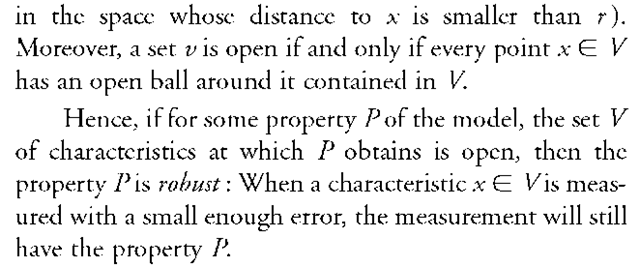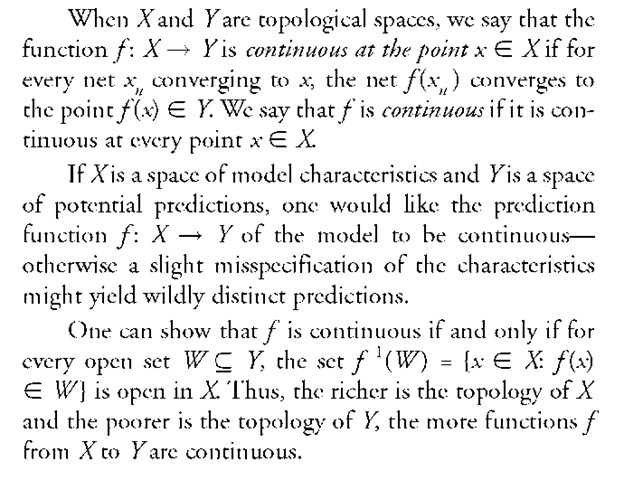In the social sciences, it is important to know if close-by models of human behavior and interaction entail close-by predictions. More precisely, the question is whether a sequence of models, which mirror reality in an increasingly accurate manner, yield predictions that converge to those that can be observed in the real world. Topology is a mathematical structure designed to express robustness, approximation, convergence, and continuity, and is thus useful in determining the relevance of a given social-science model.
For example, economies differ according to the endowments of individuals, the available production technologies, and the preferences of individuals over bundles of commodities. General Equilibrium Theory predicts the market prices that can emerge as a result of various combinations of these factors. The robustness of these predictions can then be tested through a consideration of a topological space of economies in which one can examine whether market prices change continuously with changes in the economies’ characteristics.
Similarly, in Game Theory, Nash equilibrium is a prediction of the strategies that players will choose noncoop-eratively as a function of their preferences over the outcomes entailed by strategy profiles. When considering a topological space of games, one can check how Nash equilibria vary with the game specification. Alternatively, Social Choice Theory, based on normative considerations, prescribes a strategy profile that the players should choose collectively (rather than noncooperatively) in the social situation at hand. In a topological space of such social choice problems, one can check if close-by behavior is prescribed in close-by situations.
Formally, given a space X of model characteristics (or some other objects of interest), a topology is a system T of open sets, which are subsets of Xwith the following properties: (1) The union of any collection of open sets is open; (2) the intersection of a finite number of open sets is open; and (3) both the entire space and the empty set are open. The complement of an open set is called close. A space X equipped with a topology of open subsets T is called a topological space.
A pertinent example is the case in which the space is metric, i.e., when there exists a metric that defines the distance between any two objects in the space (such that the distance of an object to itself is zero; the distance from x to y is the same as the distance from y to x; and the distance from x to z is no larger than the distance from x to y plus the distance from y to z). In such a case, the unions of "open balls" constitute a topology (an open ball of radius r around a point x in the space is the set of points
The idea of robustness, as captured by open sets, carries over also to families of economic models whose topo-logical structure is so rich it cannot always be compatible with a metric. Financial models of dynamic investment in continuous time, and stochastic uncertainty—over objective circumstances, as well as over others’ uncertainties— are two important examples.
This definition of convergence applies not only to sequences, but also to nets. In a net xn, the indices n are not necessarily the natural numbers. Rather, they may form a directed system—a set where not every pair of dis-
This definition of convergence applies not only to sequences, but also to nets. In a net xn, the indices n are not necessarily the natural numbers. Rather, they may form a directed system—a set where not every pair of distinct indices n, n’ is characterized by one of the indices being larger than the other, but where there always exists another index n" that is larger than them both.
Convergence of sequences and nets depends on the richness of the topology. In the trivial topology, containing only the empty set and the entire space X, every net converges to every point. At the other extreme, with the discrete topology, in which every subset is open (and, in particular, every subset containing a single point is open),a net xn converges to x only if for some index N and onward xn = x for all n > N Hence, the choice of topology expresses the extent to which the modeler views different points (or objects or model characteristics) in the space as distinct or similar. The more fine-detailed the distinctions are, the richer will be the topology, and fewer nets will be converging to any given point x.



